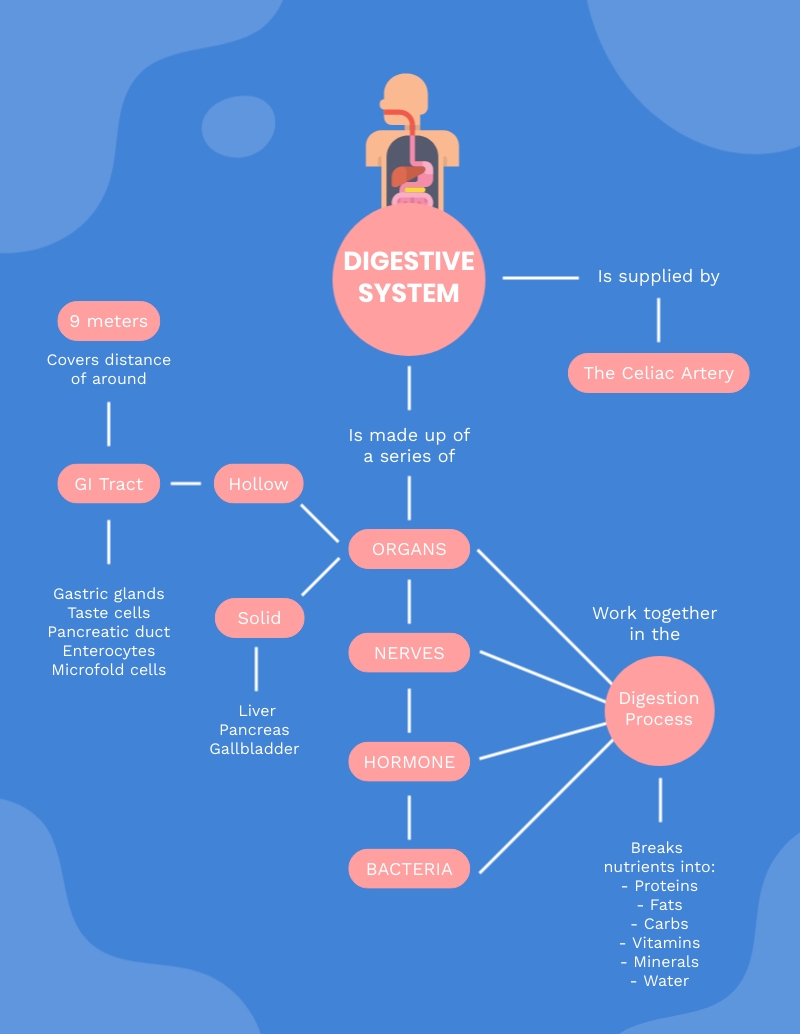In the pursuit of academic excellence, students often seek out effective study methods to enhance their learning and comprehension. Amidst the array of strategies available, concept mapping emerges as a powerful tool, offering a structured yet flexible approach to organising and understanding complex information.
In this article, we delve into the world of concept mapping, a technique that goes beyond traditional note-taking to foster deeper comprehension, critical thinking, and retention.
Concept Mapping vs Mind Mapping
Concept mapping and mind mapping are both powerful study techniques, but they have distinct differences.
Concept mapping involves creating visual representations of relationships between concepts or ideas. It typically employs nodes or bubbles to represent individual concepts, connected by lines or arrows to depict the relationships between them. These maps often follow a hierarchical structure, with broader concepts at the top and more specific details branching out below.
On the other hand, mind mapping is a more free-form approach to visualising ideas. It starts with a central concept or theme in the middle of the page, and then branches out into related concepts or subtopics in a radial fashion. Mind maps often use images, colours, and symbols to stimulate creativity and aid memory retention.
The key difference lies in their structure and purpose. Concept maps emphasise the hierarchical relationship between concepts, focusing on organising and understanding complex information. Meanwhile, mind maps prioritise brainstorming and exploring connections in a nonlinear way, fostering creativity and generating new ideas.
Both techniques can be valuable study aids, but the choice between them depends on the task at hand and individual learning preferences.
Benefits of Concept Mapping
Concept mapping offers a range of benefits for students that will ultimately allow them to gain a deeper understanding of complex subjects and become more effective learners overall. Here are five key advantages.
- Enhanced understanding and retention: one of the primary benefits of concept mapping is its ability to promote a deeper understanding of complex topics. By visually organising information into interconnected concepts and relationships, students can see the ‘big picture’ and how individual pieces of information fit together. This holistic view facilitates comprehension and improves retention, as students can better grasp the underlying structure and logic of a subject.
- Facilitates critical thinking: concept mapping encourages critical thinking skills by requiring students to analyse, synthesise, and evaluate information. As they create maps, students must identify key concepts, determine relationships between them, and make decisions about how to represent these connections visually. This process fosters higher-order thinking skills and helps students develop their ability to think critically and make informed judgements.
- Promotes active learning: unlike passive study methods such as reading or listening, concept mapping is an active learning technique that engages students in the learning process. By actively constructing their own maps, students become more deeply involved in the material and are more likely to remember it later. This hands-on approach encourages exploration, experimentation, and discovery, leading to a more meaningful learning experience.
- Supports different learning styles: concept mapping is a versatile technique that can accommodate various learning styles and preferences. Visual learners, for example, benefit from the graphical representation of information, while verbal learners can use labels and descriptions to reinforce understanding. Additionally, kinesthetic learners may find the act of physically creating and manipulating maps to be particularly effective. By catering to different learning styles, concept mapping ensures that all students have the opportunity to engage with the material in a way that resonates with them.
- Promotes metacognitive skills: metacognition refers to the ability to think about one's own thinking processes, including planning, monitoring, and evaluating learning. Concept mapping encourages metacognitive skills by prompting students to reflect on their understanding of a topic and how it evolves over time. As students create and revise their maps, they must continually assess their comprehension and adjust their representations accordingly. This metacognitive awareness not only improves learning outcomes but also equips students with valuable self-regulation skills that can benefit them in other areas of their academic and personal lives.
Concept Map Examples
Concept maps are versatile tools that can be used to visualise a wide range of topics and subjects. Here are three examples of concept maps that illustrate different concepts:
1. Photosynthesis Concept Map
This map illustrates the process of photosynthesis, in which plants convert light energy into chemical energy to produce glucose and oxygen. It typically includes key concepts, such as sunlight, carbon dioxide, water, chlorophyll, glucose, and oxygen, along with arrows indicating the flow of energy and matter through the various stages of the process.

2. Digestive System Concept Map
This map depicts the organs and processes involved in the digestive system, from ingestion to excretion. It may include concepts such as the mouth, oesophagus, stomach, small intestine, large intestine, enzymes, digestion, absorption, and elimination, along with connections showing the sequence of events and the interactions between different parts of the system.

3. Nervous System Concept Map
This map illustrates the structure and function of the nervous system, including the central nervous system (brain and spinal cord) and the peripheral nervous system (nerves and ganglia). It may feature concepts such as neurons, neurotransmitters, sensory organs, motor neurons, reflexes, and voluntary actions, along with lines indicating the transmission of signals and the integration of information throughout the system.

A Basic Concept Map Template
As we’ve demonstrated, concept mapping is a valuable study technique that can help students organise and visualise complex information. Here are the steps on how to create a concept map:
1. Select a Topic
Choose a topic or concept that you want to explore or study. This could be a subject from school, a chapter from a textbook, or a theme from a lecture or presentation. Place the most important or central concept in the centre of the page.

2. Identify Key Concepts
Pinpoint the main ideas or concepts related to your chosen topic. These could be individual terms, theories, events, or processes that you need to understand. Arrange the key concepts under the topic in a descending order that flows logically from the topic.
.jpeg)
3. Determine Relationships
Identify the relationships between the key concepts. How are they connected to each other? Are there cause-and-effect relationships, hierarchical structures, or similarities and differences that you need to represent?
4. Draw Connecting Lines
Use lines or arrows to connect the concepts and show the relationships between them. You can use different line styles or colours to represent different types of relationships, such as causal links, sequences, or categories.
.jpeg)
5. Add Details
Write additional information or details next to each concept or connection to clarify their meaning. This could include definitions, examples, supporting evidence, or explanations to help you remember and understand the concepts more deeply.
.jpeg)
6. Review and Revise
Take a step back and review your concept map. Does it accurately represent the relationships between the key concepts? Are there any connections that need to be clarified or revised? Make any necessary adjustments to ensure that your concept map is clear, organised, and informative.









